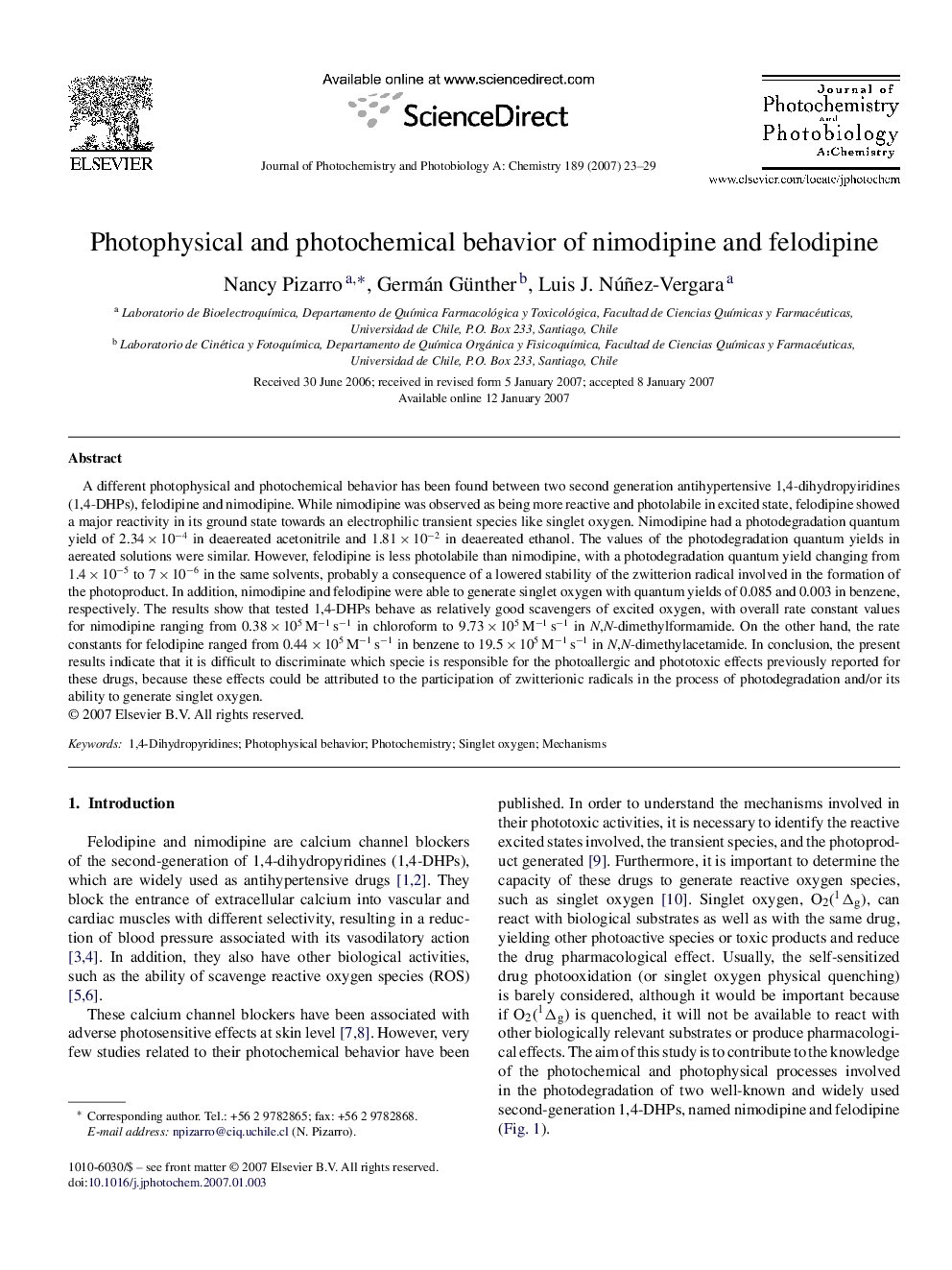| Article ID | Journal | Published Year | Pages | File Type |
|---|---|---|---|---|
| 29301 | Journal of Photochemistry and Photobiology A: Chemistry | 2007 | 7 Pages |
A different photophysical and photochemical behavior has been found between two second generation antihypertensive 1,4-dihydropyiridines (1,4-DHPs), felodipine and nimodipine. While nimodipine was observed as being more reactive and photolabile in excited state, felodipine showed a major reactivity in its ground state towards an electrophilic transient species like singlet oxygen. Nimodipine had a photodegradation quantum yield of 2.34 × 10−4 in deaereated acetonitrile and 1.81 × 10−2 in deaereated ethanol. The values of the photodegradation quantum yields in aereated solutions were similar. However, felodipine is less photolabile than nimodipine, with a photodegradation quantum yield changing from 1.4 × 10−5 to 7 × 10−6 in the same solvents, probably a consequence of a lowered stability of the zwitterion radical involved in the formation of the photoproduct. In addition, nimodipine and felodipine were able to generate singlet oxygen with quantum yields of 0.085 and 0.003 in benzene, respectively. The results show that tested 1,4-DHPs behave as relatively good scavengers of excited oxygen, with overall rate constant values for nimodipine ranging from 0.38 × 105 M−1 s−1 in chloroform to 9.73 × 105 M−1 s−1 in N,N-dimethylformamide. On the other hand, the rate constants for felodipine ranged from 0.44 × 105 M−1 s−1 in benzene to 19.5 × 105 M−1 s−1 in N,N-dimethylacetamide. In conclusion, the present results indicate that it is difficult to discriminate which specie is responsible for the photoallergic and phototoxic effects previously reported for these drugs, because these effects could be attributed to the participation of zwitterionic radicals in the process of photodegradation and/or its ability to generate singlet oxygen.
